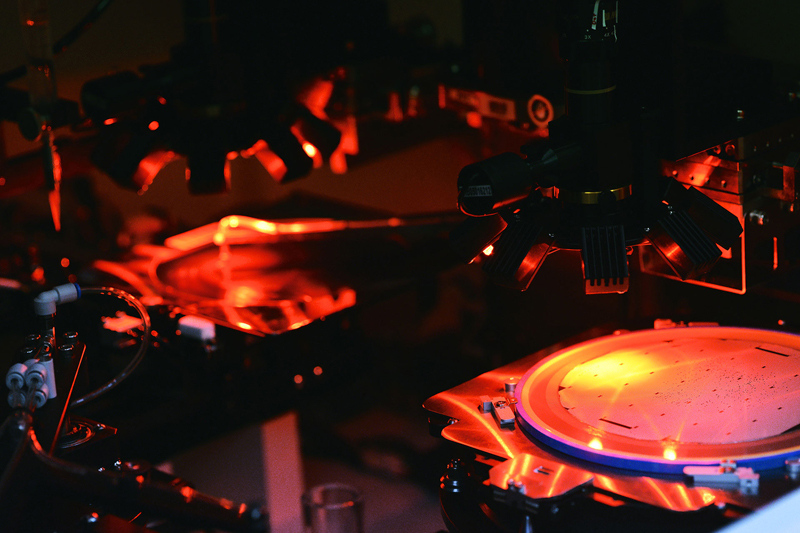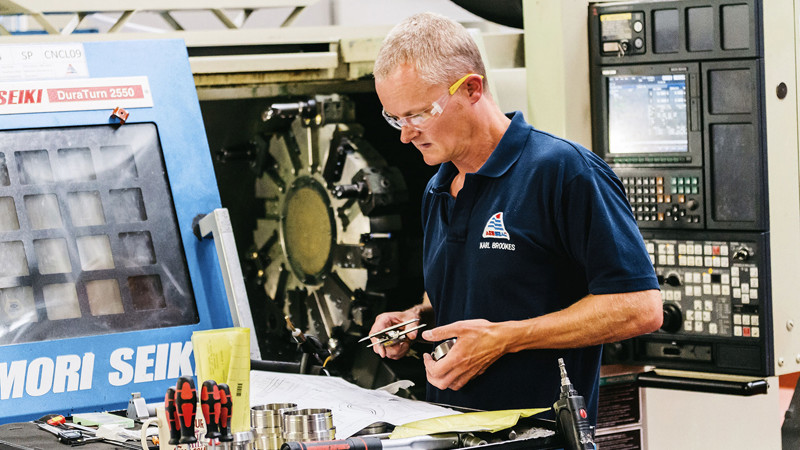New ideas that could give UK manufacturing a lift
Advocates often exaggerate the speed of development and the impact of new technologies. Yet by 2035, those that are now emerging will have matured – and in some of them the UK is already strong. How can British manufacturers make sure they continue to keep up with the pace?
First published by Made Here Now, April 2015
Five emerging areas of new thinking promise to make factories flourish
Here are five areas in which British companies are establishing themselves among the leaders and where we can expect to see them make further strides over the coming decades.
Virtual engineering
Today’s car designers use room-sized, 3D computer simulations to test and improve products or production operations. The aim is to cut the cost of product development and to improve component and system quality enough to slow the trend toward more and bigger product recalls.
The carmaker Jaguar Land Rover is expert in virtual engineering and collaborates widely with universities and research institutes in this field, as do Bentley and BAE Systems. JLR also has an important link with Holovis, a small UK company that is a world leader in making virtual reality “caves” big enough to accommodate several people. These caves allow engineers to see the results of proposed design changes for objects ranging from engines to buildings.
JLR has gone even further. It has used its skills in virtual displays to bring 360 degree vision to drivers, using live video cameras outside the car to display images on the inside of the car’s roof pillars, making them appear transparent. Similarly, it hopes to enable car buyers to design a vehicle on a mobile device, then bring their saved design to a showroom so they can interact with life-size virtual versions of what they have created.
However the merits of virtual engineering go beyond cars and aerospace: they extend not just to other parts of manufacturing, but also to the simulation of high-performance computing and IT storage.
Materials
Just as Britain could spread the benefits of virtual engineering further than cars, so it could diffuse advanced materials outside the vibrant aerospace sector, where they often originate. In 2012, after all, Britain’s government highlighted materials as one of the eight “great technologies” it would support.
The hotter the blade of a jet’s turbine becomes, the more efficiently it works and the less carbon dioxide it generates. Through single-crystal super-alloys and thermal barrier coatings, engine manufacturer Rolls-Royce has done much to enable turbine blades to run hundreds of degrees hotter than their constituents would normally allow. At three of the 14 university technology centres it runs in the UK, Rolls-Royce researchers have begun examining how novel metal silicides could make for turbines capable of withstanding still higher temperatures. In other materials work, Rolls-Royce has also looked at how to stop oxygen making titanium brittle, in a development that could bring the metal’s combination of strength and low weight to a range of products, including not just aircraft, but also cars and trains.
In carbon-based materials, Britain’s strengths in graphene, first produced in Manchester University in 2004, also augur well. The government has put almost £100m into funding the Graphene Engineering Innovation Centre and National Graphene Institute, both based in Manchester. Several UK companies, among them 2D Tech, Applied Graphene Materials and Cambridge Nanosystems, are trying to commercialise the new material.
Sensors
In sensing devices, Britain may also be able to give Asian and US electronics manufacturers a run for their money over the next two decades.
In the fast-developing “internet of things” – networks of internet-connected devices – Cambridge-based ARM Holdings, which creates and licenses microchip designs, offers a platform for linking devices around homes, offices and “wearables”. In sensors, Ubisense, another Cambridge business, has created small gadgets that detect and communicate position, and can be used, for example, to track components inside car plants.
A much bigger company that has plenty of expertise in related areas is Spectris, which makes instruments for measuring, testing and control of industrial processes. Since 2008, the company has grown rapidly, and has acquired a British business that specialises in the analysis of nanomaterials. Another area of sensing where Britain shows potential is in biometrics – measuring people. Here, Human Recognition Systems, based in Liverpool, is a pioneer, helping airports identify people in transit, and firms identify workers entering construction sites or industrial plants.
Healthcare
In the place where medicine meets manufacturing, cheap, disposable and non-invasive plastic electronics devices may one day be able to detect diabetes from the chemicals they sense in a person’s breath. In another example, Renishaw, which specialises in a range of manufacturing technologies, has applied the insights it has gained there to make robots for precision neurosurgery. It has also built fast in-vitro diagnostic devices for clinical research into infectious disease.
On a grander scale, the government has named regenerative medicine, which deals in the engineering of cells and human tissue, as one of its eight “great” technologies. It has also earmarked about £200m to promote synthetic biology. Here biological mechanisms are designed to create products ranging from biologically-engineered yeast – a precursor for anti-malarial drugs – to new materials for protecting soldiers in chemical warfare. Such initiatives principally offer hope of increasing Britain’s existing strengths in pharmaceuticals manufacturing and research.
Food and drink
Food and drink adds more value to the British economy than any other sector of manufacturing: about £20bn a year. Moreover, a variety of product and process technologies look set to keep UK food and drink manufacturers in good shape. Take Allied Bakeries, the bakery arm of Associated British Foods. It has opened a Glasgow production line in which just 27 workers make 33,000 “thin rolls” an hour, with the products offering both pre-sliced convenience and low calories.
For more food and drink innovation, go to Chipping Campden in Gloucestershire, where Campden BRI, a research institute, helps companies from AB World Foods (maker of Patak curries) through to Unilever. It is active in technologies such as high-pressure processing, which can make fried food less oily and meat more tender.
What the UK should do next
Britain’s government has drawn up policies on the automotive sector and the internet of things. It has a ministerial strategy group on bio-pharmaceuticals, though this appears not to have met for more than a year. On top of regenerative medicine and synthetic biology, it has also designated robots and autonomous systems as a favoured area. And it has established Catapult Centres to stimulate the development of high-value manufacturing, transport systems, satellites and cell therapies.
So far, so good. However, budgets are tight. Tax credits based on the government’s Patent Box, which will close to new entrants next year, will not prove enough to support high-tech manufacturing. And there is an even bigger problem than the scarcity of state funding. Britain’s government says it wants an “informed debate” about science and innovation, but it has not done enough to counter fears about technological innovation in areas such as synthetic biology. Based on what appears to be scant evidence, two Manchester social scientists recently raised concerns about the field – about the ethics of interfering with nature; potential environmental, health and safety risks, and also about “ownership and control, and effects on existing sectors and workforces”. Yet Britain has barely begun research in synthetic biology, let alone applied its benefits to manufacturing.
In Britain more than in most countries, fears about and protests against technological innovation emerge years before such innovation is implemented. UK governments of every political persuasion should stop tinkering with taxes and instead, much more excitingly, start a real public clarification of the need to take risks around the five technological areas outlined above.
The risks of Britain not taking advantage of tomorrow’s impressive manufacturing advances, in terms of the new jobs and wealth that would be lost, are extremely high – as are the potential gains that could come from exploiting these changes. Through data and debate, advocates of manufacturing progress must bring about a change in the cultural climate in Britain. That alone would do much to increase the budgets, the speed and, yes, the romance associated with new ways to make things.
Fmr President of Kenya on Trump cutting off foreign aid:
“Why are you crying? It’s not your government, he has no reason to give you anything. This is a wakeup call to say what are we going to do to help ourselves?”
America first is good for the world.
Our entire Green Socialist establishment should be banged up under the ‘Online Safety’ laws, for spreading demonstrable lies (the ‘climate crisis’), causing non-trivial harm to the industrial working class, ordinary drivers, farmers, taxpayers etc, etc.
#Chagos? #Mauritius PM Navin Ramgoolam "is reported to want Starmer to pay £800m a year, plus ‘billions of pounds in #reparations’." (14 January) https://www.spiked-online.com/2025/01/14/the-chagos-islands-deal-is-an-embarrassment/
Now the Torygraph wakes up https://telegraph.co.uk/gift/1ff8abbb462cd609
Read @spikedonline - first with the news!
Articles grouped by Tag
Bookmarks
Innovators I like

Robert Furchgott – discovered that nitric oxide transmits signals within the human body

Barry Marshall – showed that the bacterium Helicobacter pylori is the cause of most peptic ulcers, reversing decades of medical doctrine holding that ulcers were caused by stress, spicy foods, and too much acid

N Joseph Woodland – co-inventor of the barcode

Jocelyn Bell Burnell – she discovered the first radio pulsars

John Tyndall – the man who worked out why the sky was blue

Rosalind Franklin co-discovered the structure of DNA, with Crick and Watson

Rosalyn Sussman Yallow – development of radioimmunoassay (RIA), a method of quantifying minute amounts of biological substances in the body

Jonas Salk – discovery and development of the first successful polio vaccine

John Waterlow – discovered that lack of body potassium causes altitude sickness. First experiment: on himself

Werner Forssmann – the first man to insert a catheter into a human heart: his own

Bruce Bayer – scientist with Kodak whose invention of a colour filter array enabled digital imaging sensors to capture colour

Yuri Gagarin – first man in space. My piece of fandom: http://www.spiked-online.com/newsite/article/10421

Sir Godfrey Hounsfield – inventor, with Robert Ledley, of the CAT scanner

Martin Cooper – inventor of the mobile phone

George Devol – 'father of robotics’ who helped to revolutionise carmaking

Thomas Tuohy – Windscale manager who doused the flames of the 1957 fire

Eugene Polley – TV remote controls



0 comments